Pets are notorious for nibbling on plants, digging up bulbs, and rolling in things they shouldn’t be. While the garden is one of my favourite places, I know it’s a favourite space for my cat and dog as well. To make my yard as safe as possible, I’ve eliminated some of these poisonous plants for pets from my garden.
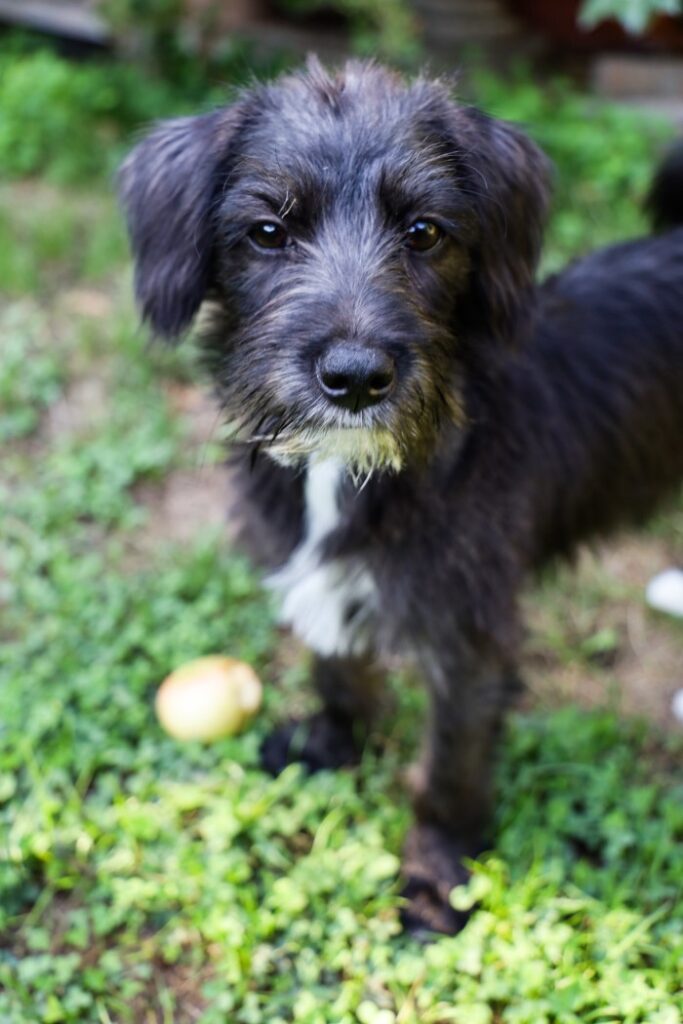
Do you like to garden with pets? Dogs and cats can be great garden company, and keeping them safe is important. I have had my fair share of four-legged garden helpers, and I will say that some needed a lot of training to safely roam the garden, while others were able to work it out on their own.
When I first adopted a young labrador retriever, I quickly needed to learn which garden plants were safe for her to eat and which were not, because she ate everything.
I watched my lab one day as she explored the peas. She has seen me pick a pea pod and eat it. I then fed one to her. She loved it! The next day, I went out to the garden to find her eating the entire pea patch in one sitting. I guess she had developed a taste for gardening.
Many years later, I now have a different dog named Ozzie and a cat named Magic. I’ve continued to carefully plant a garden that is not only enjoyable for me, but safe for them as well.
This post will cover…
- What Exactly is a Toxic Plant?
- Poisonous Plants for Pets
- Azaleas and Rhododendrons
- Milkweed
- Lily
- Autumn Crocus, Daffodil, Hyacinth, Tulip
- Yew
- Ivy
- Oleander
- Foxglove
- Lily of the Valley
- Sago Palm
- Cyclamen
- What to Do if Your Pet Ingests a Poisonous Plant
- Frequently Asked Questions About Toxic Plants for Pets
- More Posts About Pets
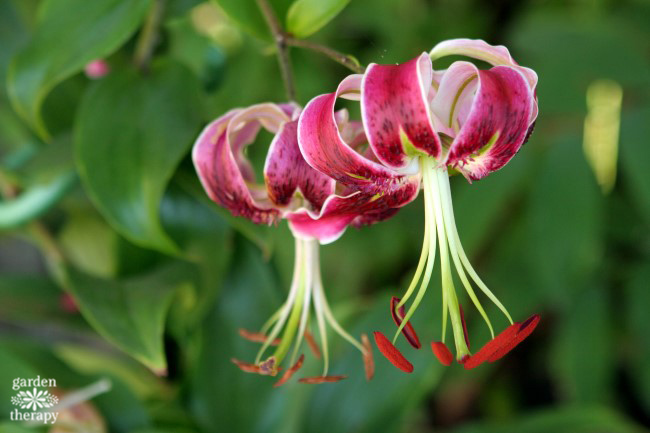
What Exactly is a Toxic Plant?
As I looked around the garden, I knew that protecting my vegetable garden from my lab was hopeless, but that protecting her from poisonous plants for dogs was essential. I researched which garden plants could cause her harm, and I was shocked by the results.
Not only is the list long, but so many of these plants poisonous for pets are common in home gardens and households.
While the term “poisonous plants” makes us think of rushing a comatose animal to the vet, many toxic plants will only cause digestive upset or have an unpleasant flavour that will help the animal learn that not everything tastes as good as fresh garden peas.
I was told a story where a dog ate a bunch of ghost peppers off a backyard bush. Those peppers are not only hot but also dangerous for a dog to eat. The dog needed to spend a few days in the vet’s office and had to deal with terrible burning pain.
Luckily, the dog fully recovered, and when he got home, he wouldn’t even walk near the part of the yard where the peppers were growing in (even though the plant had been removed). This pup will surely be savvier in his future culinary adventures.
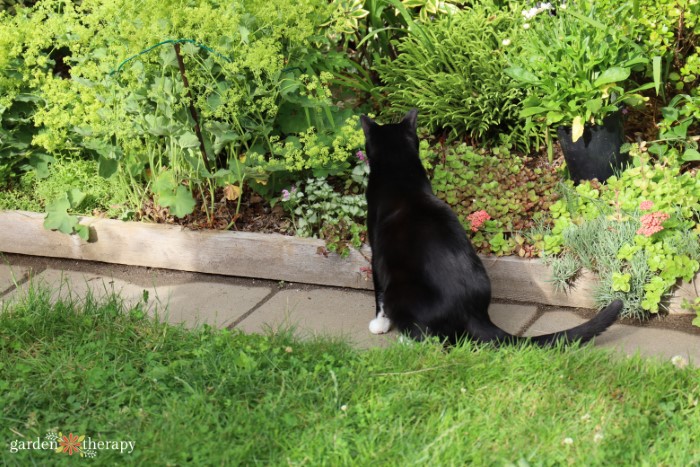
Poisonous Plants for Pets
What outdoor plants are the most poisonous to pets? While some plants will teach your pet a valuable lesson, there are others that you will want to avoid altogether. Here is a list of common garden plants that are poisonous to pets and some similar, safe alternatives.
Azaleas and Rhododendrons
Instead, try camellia.
These plants are very poisonous to cats and dogs and can be fatal. If your pet eats these, get them to the vet as quickly as possible. To keep cats and dogs safe, try planting a camellia instead.
Like rhododendrons, camellias are large bushy plants with gorgeous colourful spring flowers so that they will give your garden the same appeal without the same risk to your furry friends.
Milkweed
Instead, try bee balm.
This plant is wonderful for monarch butterflies, but it is a problem for cats and dogs. It contains cardiac glycoside, a toxin that can cause severe heart problems in pets.
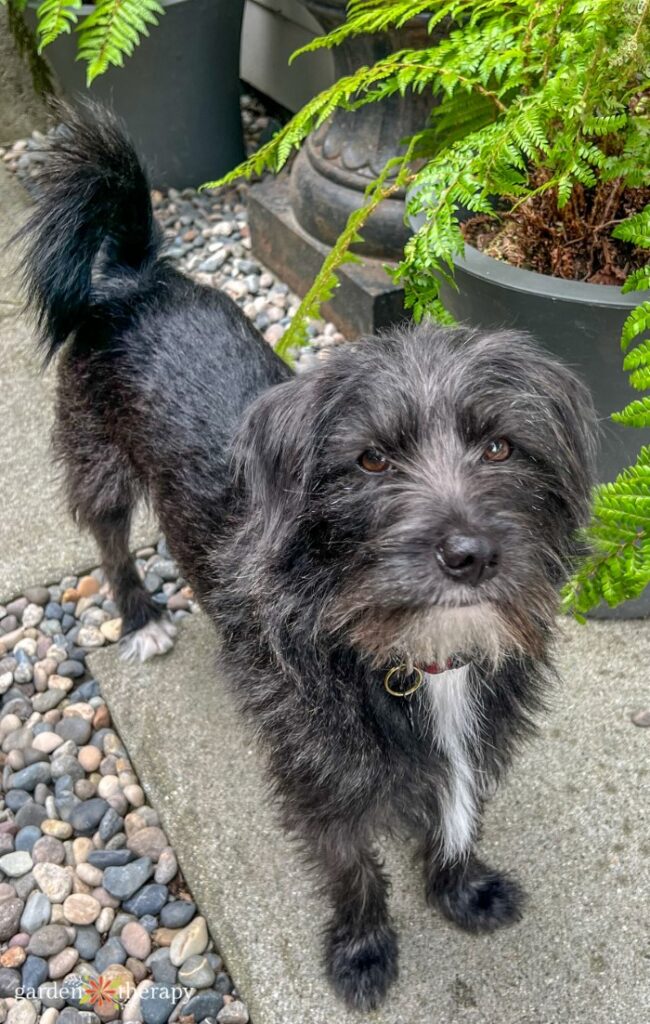
Lily
Instead, try snapdragon or rose.
Lilies are the top of the list for plants poisonous to cats. If a cat eats the petals or ingests the pollen (even if the pollen gets on a cat’s fur and then licks it off), it can cause kidney failure and other serious problems.
Take a cat to the vet immediately if it consumes any part of a lily, and if you have cats trade up your lily plants for another pretty bloomer that is non-toxic.
Autumn Crocus, Daffodil, Hyacinth, Tulip
Instead, try petunia, cornflower, or African violet.
The bulbs of these plants can be highly toxic to pets. If your dog is a digger who is likely to unearth bulbs and chew on them, skip planting these.
If you don’t have a pet that digs, these plants should be fine, as only the bulbs are poisonous.
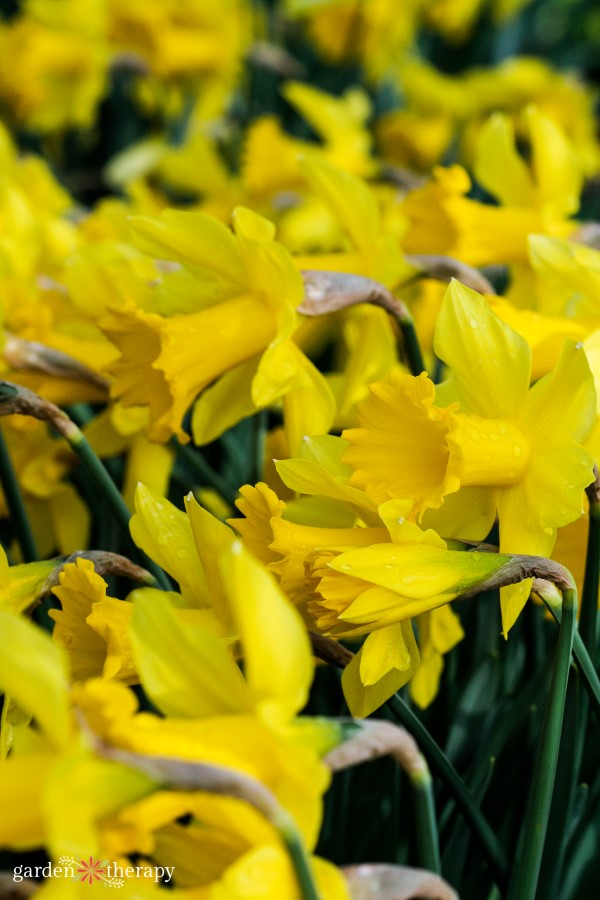
Yew
Instead, try eastern hemlock.
Yew berries are very toxic to both cats and dogs. If your pet consumes them, take them to the vet immediately.
Ivy
Instead, try sweet potato vine.
Ivy is very poisonous to pets, plus it is an invasive plant in North America, so trade in the ivy for a different vine.
Oleander
Instead, try gardenia.
This plant is extremely poisonous to pets and can be fatal.
Foxglove
Instead, try fireweed.
This plant is poisonous to both cats and dogs. It can cause serious health problems and can even be fatal.
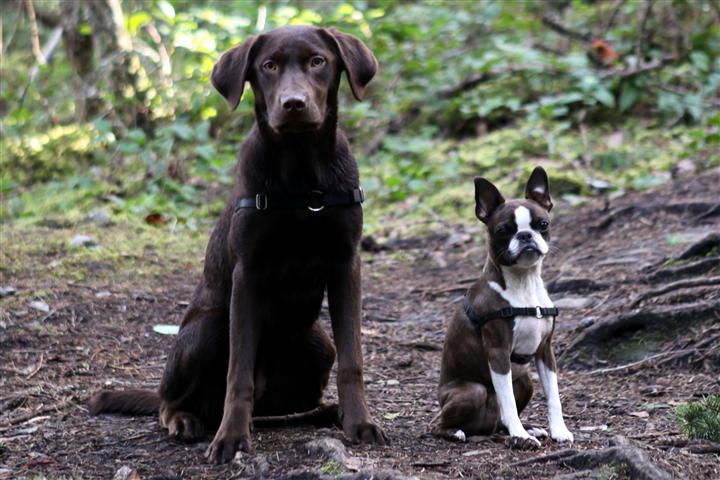
Lily of the Valley
Instead, try pansies.
Sweet smelling and lovely, the lily of the valley is considered a poisonous plant for dogs. The smallest amount of the plant can cause dog heart problems if ingested.
It’s important to note that lily of the valley is also highly toxic to humans and can be fatal when ingested, especially by children.
Sago Palm
Instead, try areca palm.
Warm climates may have the sago palm outside while others use it as a houseplant. The leaves and bark can affect your plant, but the most toxicity is found in the plant’s seeds.
Symptoms from ingesting a sago palm include vomit, diarrhea, liver failure, seizures, and it can be fatal.
Cyclamen
Instead, try a Christmas cactus.
Cyclamen are popular inside and out since they bloom while it’s still chilly outside. If your pet eats the leaves, it will likely vomit and have diarrhea. And if they dig up the tubers, it can affect their heart rate and even be fatal.
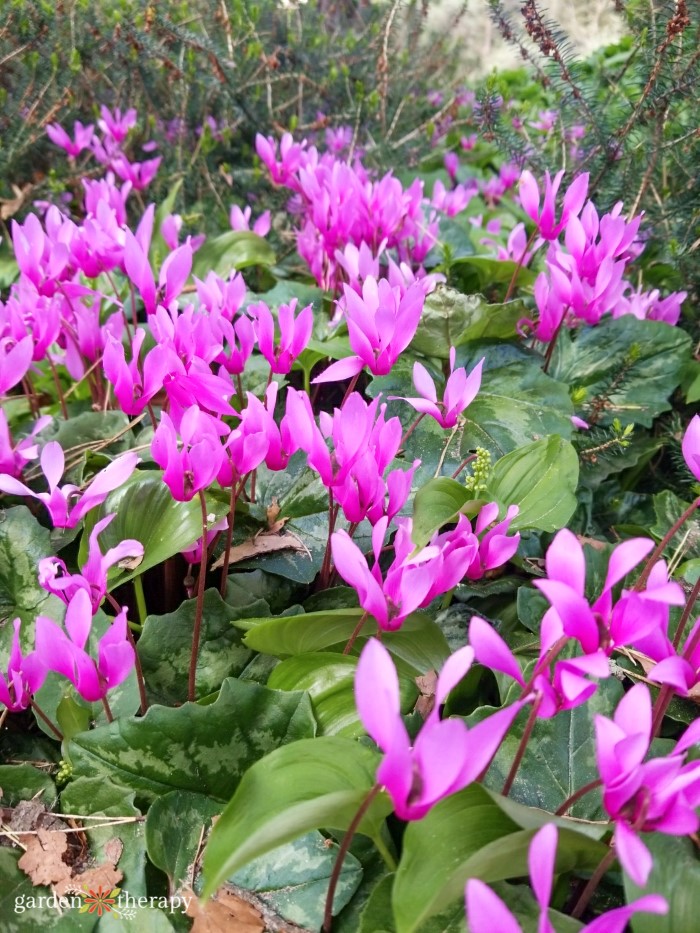
What to Do if Your Pet Ingests a Poisonous Plant
If your pet eats any plants you are unsure of, you should take them to the vet for a checkup, especially if you notice your pet acting strangely, seeming lethargic, or drooling more than usual.
Many toxic plants in the garden can cause varying symptoms depending on pet size and ingested amount. Often, the poisoning is less serious.
But to be safe, it’s a good idea to watch your pets and take them to a vet if there is any suspicion that they may have been poisoned.
Frequently Asked Questions About Toxic Plants for Pets
Dogs and cats will always eat plants, no matter how hard you try. In most cases, it’s to help with their digestion. For instance, cats eat grass to help them get rid of hairballs. Since they can’t digest it, they throw up, which helps to dislodge what is stuck in their stomach.
On the other hand, dogs eat plants to add plant material to their diet. You can prevent them from chewing on plants by adding chunks of pumpkin or sweet potato to their food and giving them something they like to chew on.
Besides the garden, there are plants you want to avoid indoors as well. These include sago palm, bird of paradise, kalanchoe, cyclamen, ivy, and poinsettia. You can find my full list of toxic houseplants here.
Alternatively, there are plenty of houseplants that are very safe for pets! Here’s my list of 20 vet-approved houseplants.
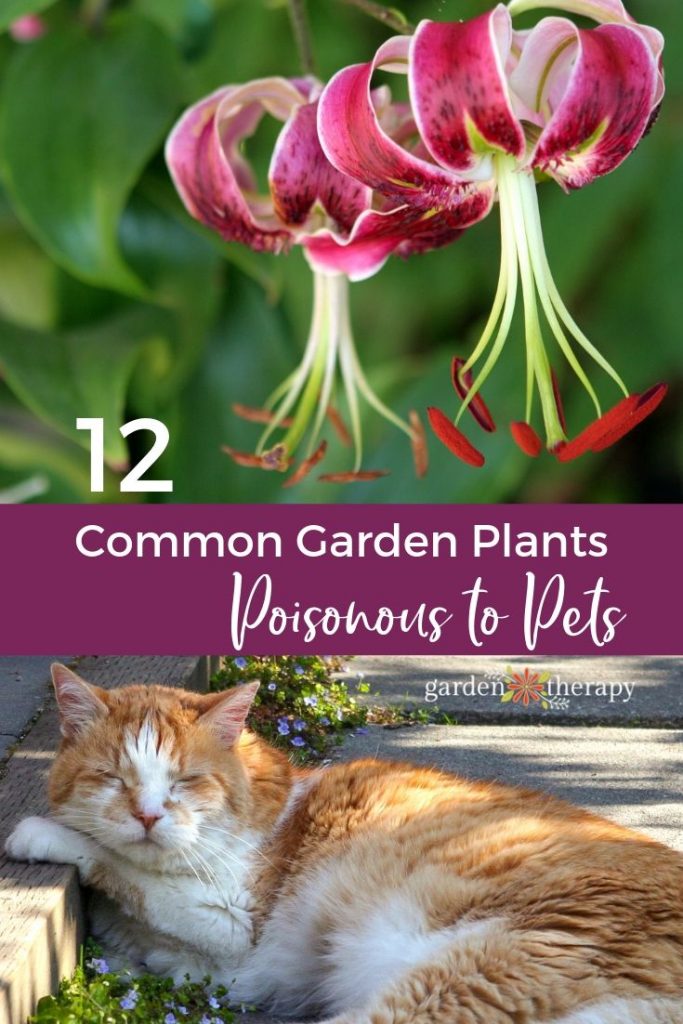




Hi Stephanie – I am so glad I read your article! I have three dogs, and your article made me stop and take a look at my flower garden. I have Milkweed planted in order to attract butterflies but will definitely remove this plant and substitute Bee Balm. Your identification of plants to use instead of the poisonous plants was a great addition to your article and so very beneficial to me. Thanks so much.
Hi Jana, you are very welcome! I’m glad that the alternative plant list was helpful. Best to you and your pack :)
I especially like that you offer alternate plants if we choose to remove not plant the dangerous plants. So helpful. I didn’t know about lilies and especially the pollen. I received a gorgeous lily arrangement from my son-in-law for Mother’s Day. I’ve been removing some of the pollen, but didn’t get it all before it fell to the kitchen counter. My 18-year-old cat can no longer jump up on the counter so no problem there, but I will be more careful about this in the future.
Thanks, Janet. How lovely that you have an 18-year old kitty. That’s a special friend :)
We have wisteria plants that grow wild in the woods next to my horse pastures. I heard the pods are very toxic to my horse. Can you tell me when the pods fall to the ground?
My cat was chewing the pea plants I started in the house she went leave them alone is this toxic it’s the vegetable pea
No, peas are fine for cats.
Gardenia as a substitute is dangerous to cats and dogs